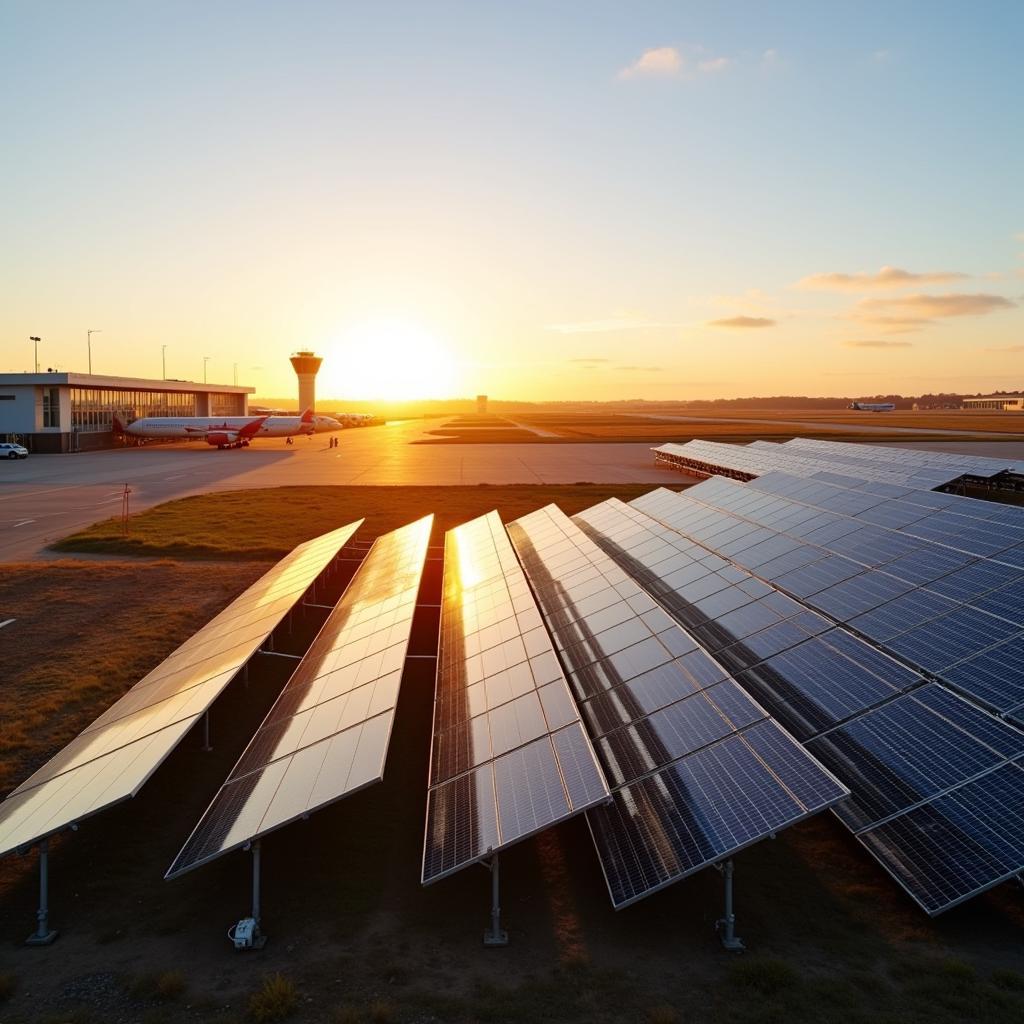Adelaide Airport in South Australia is striving to be the first airport in the Asia Pacific region to achieve carbon neutrality. This ambitious goal reflects a growing global awareness of the environmental impact of air travel and the urgent need for sustainable practices within the aviation industry. The airport’s commitment to reduce its carbon footprint is not just a trend, but a significant step towards a greener future for aviation.
Adelaide Airport’s Journey to Carbon Neutrality
Adelaide Airport’s carbon neutral initiative involves a multi-pronged approach, focusing on energy efficiency, renewable energy sources, and carbon offsetting. They are actively working to minimize their environmental impact across all airport operations. This includes everything from the energy used in the terminal buildings to the ground transportation vehicles operating on the airfield. They are constantly seeking new technologies and strategies to further reduce their emissions.
Key Strategies for Achieving Carbon Neutrality
Several key strategies are being employed to help Adelaide Airport achieve its ambitious goal:
- Investing in Renewable Energy: The airport is investing heavily in solar power, with plans to install large-scale solar farms on airport land. This shift towards renewable energy will significantly reduce their reliance on fossil fuels.
- Improving Energy Efficiency: A range of energy-saving measures are being implemented throughout the airport, from upgrading lighting systems to optimizing heating and cooling systems in the terminals. Even small changes can contribute to significant reductions in overall energy consumption.
- Carbon Offsetting: While the airport focuses on reducing its direct emissions, unavoidable emissions are offset through investments in accredited carbon offset projects. These projects often involve reforestation or other initiatives that help absorb carbon dioxide from the atmosphere.
- Engaging Stakeholders: The airport is working closely with airlines, ground handlers, and other stakeholders to encourage sustainable practices across the entire airport ecosystem. Collaboration is key to achieving a truly carbon neutral airport.
 Adelaide Airport Solar Farm Powering Sustainable Aviation
Adelaide Airport Solar Farm Powering Sustainable Aviation
The Importance of Carbon Neutrality in Aviation
The aviation industry is a significant contributor to global greenhouse gas emissions. As air travel continues to grow, so does the need to address its environmental impact. Adelaide Airport’s commitment to carbon neutrality sets a precedent for other airports in the region and globally. It demonstrates that achieving sustainable aviation is not only possible, but necessary for the future of the industry.
Why Adelaide Airport is Leading the Way
Adelaide Airport’s proactive approach to carbon neutrality has several key benefits:
- Environmental Stewardship: Reducing emissions contributes to mitigating the effects of climate change, preserving the environment for future generations.
- Economic Benefits: Investing in renewable energy and energy efficiency can lead to long-term cost savings for the airport.
- Enhanced Reputation: Demonstrating environmental responsibility enhances the airport’s reputation among passengers, airlines, and the wider community.
“Achieving carbon neutrality is not just an environmental imperative, it’s a business imperative,” says Dr. Emily Carter, a leading expert in sustainable aviation at the University of South Australia. “Airports that embrace sustainability will be better positioned for the future.”
Challenges and Opportunities
While Adelaide Airport’s commitment is commendable, the path to carbon neutrality is not without its challenges. The fluctuating nature of renewable energy sources like solar and wind power requires careful planning and management. Additionally, engaging all stakeholders in the effort can be complex. However, these challenges also present opportunities for innovation and collaboration. The development of new technologies and strategies in pursuit of carbon neutrality can lead to advancements that benefit the entire aviation industry.
“The journey to carbon neutrality requires a long-term vision and a willingness to embrace change,” adds Dr. Carter. “Adelaide Airport is showing the way forward for the entire aviation sector.”
Conclusion
Adelaide Airport’s pursuit of becoming the first carbon neutral airport in the Asia Pacific is a landmark achievement. This commitment to sustainability sets an example for other airports and demonstrates the viability of a greener future for aviation. By embracing renewable energy, improving energy efficiency, and engaging stakeholders, Adelaide Airport is paving the way for a more sustainable and environmentally responsible aviation industry. Achieving 1 airport in Asia Pacific to become carbon neutral is a significant step towards a more sustainable future.
FAQ
- What does carbon neutral mean?
- How is Adelaide Airport reducing its carbon footprint?
- What are the benefits of carbon neutrality for airports?
- What challenges does Adelaide Airport face in achieving carbon neutrality?
- How can other airports follow Adelaide Airport’s lead?
- What is the significance of carbon offsetting in Adelaide Airport’s plan?
- How does Adelaide Airport engage with its stakeholders in its carbon neutral initiative?
Situations that may involve common questions:
- Passengers inquiring about the airport’s sustainability initiatives.
- Airlines seeking to partner with a carbon neutral airport.
- Businesses looking to invest in green technologies at the airport.
- Community members interested in the airport’s environmental impact.
Further Reading:
- Learn more about sustainable aviation practices on our website.
- Discover other environmental initiatives at Adelaide Airport.
For further assistance, please contact us at Phone Number: +13089626264, Email: [email protected] or visit our office at 404 Bothwell St, Oxford, NE 68967, USA. We have a 24/7 customer service team.

